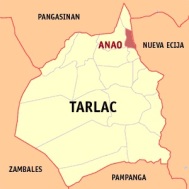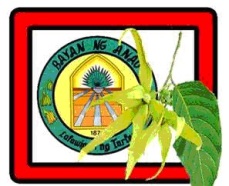Indigenous Name: TARLAC GRASS
Spanish Name: Hierba Tarlaquena
Scientific Name: Themeda arundinacea (Roxb.) Ridl.
Kapampangan Name: Dikut Tarlac
Aboriginal Name: Tallak
Ilocano Name: Tanglar; Tarlar
Popular Name: Matarlac; Malatarlac
Family: Gramineae
Location Discovered: Bamban, Tarlac
Date Found: November 21, 2002
Other Places Located: Capas, Tarlac City, San Jose, Mayantoc, Camiling, Santa Ignacia, Camiling, San Clemente
Researcher: Dr. Rodrigo M. Sicat
Asst. Researchers: Rodel T. Botio/Delfin J. Sibal
Philippine History
TARLAC PROVERBS, RIDDLES AND SUPERSTITIOUS BELIEFS
Tarlac is a landlocked province in Luzon with Tarlac City as its capital. It is considered as the first melting pot in Central Luzon if not in the entire archipelago.
As such, the province enormously thrives with varieties of cultures, which is why, the culture is predominantly a chemistry of Kapampangan, Ilokano, Pangasinense and Tagalog. The blend is largely due to its history and geographical borderlines.
It is a province colored with merry people and languages. As border languages speakers, the usage of the verbal and written language today may seem not to be as puritan as that of the pioneering settlers, yet, are instinctively spoken by the contemporary Tarlakenos.
Corollary, classical culture vis-à-vis mores, norms, knowledge, customs and traditions are still evident. The following are cultural examples that are germane among the people these days:
History of Tarlac Towns
Author: Dr. Rodrigo M. Sicat
Web Design: Engr. Mark Jason V. SicatANAO: SERENE TOWN OF ILANG-ILANG BLOSSOMS
History of the Holy Cross Parish Church in Sta. Cruz, Lubao, Pampanga
STA. CRUZ is synonymous to Lubao. It is also the ancient political nucleus of the Kapampangan sphere; hence, the birthplace of the Kapampangan empire and civilization.
Historical documents indicate that Sta. Cruz bear the ancient name Balas due to the sandy nature of the village. Aptly, the cradle of Kapampangan civilization was born along the riverbanks of balas (today the sadsaran in Balantacan and Calangain which were former villages of Sta. Cruz) and later on developed as a powerful and prosperous settlement in caongotan (now called Lalam Ungut). Hence, the people of Sta. Cruz with the entire sphere of Kababan (Lubao) and the Kapampangan Kingdom and its Empire had already an advanced system of government and a mixed religion of paganism and Islam even before the arrival of the Spaniards. The civilization was introduced by the ancient Malays (today called Austronesians) to the aborigines (Aytas) through barter system.
History of the San Agustin Church of Lubao
The Arrival of the Spaniards
LUBAO was a prosperous kingdom with an organized system of government and with strong military fortifications when the Spaniards led by maestro de campo Martin de Goiti together with Lt. Antonio Carvajal, other selected Spanish soldiers and Augustinian friars set foot to conquer Lubao on September 14, 1571. In the Roman Catholic liturgical calendar, the date is one of the most important religious celebrations because it is the Feast Day of the Triumph of the Cross. In Greek, it is called “Raising Aloft of the Precious Cross” and in Latin, Exaltatio Sanctae Crucis or literally, “Raising Aloft of the Holy Cross”. (“Exaltatio” is “Exaltation”, “Triumph”). It is the glorious moment when the Lord Jesus Christ won the victory against man’s sinfulness. It is the date to rejoice in songs and praises because it is the day when the gates of Heaven finally opened for man’s salvation. It is also celebrated with great gladness and tidings because it is mankind’s reunification with his Almighty Creator. In reverence to the Feast Day of the Cross, the Spaniards deemed necessary the offering of a black miraculous Holy Cross to the people of Lubao as a sign of their amity with them and their acceptance of the Christian faith. Hence, God providentially chose Lubao to lead in the propagation of the Good News of the Lord Jesus Christ with the Augustinian Church as its missionary center in the propagation and configuration of Christendom in the central and northern Luzon areas.
History of Lubao, Pampanga
LUBAO is a 1st class municipality and is one of the 22 towns of the province of Pampanga. It is located at the southwestern part of the province. It is bounded by the municipalities of Guagua on the north, Sasmuan on the east, Floridablanca on the west and Orani, Bataan on the south. It is about 56’07” latitude, and 120ͦ 36’04” longitude.






